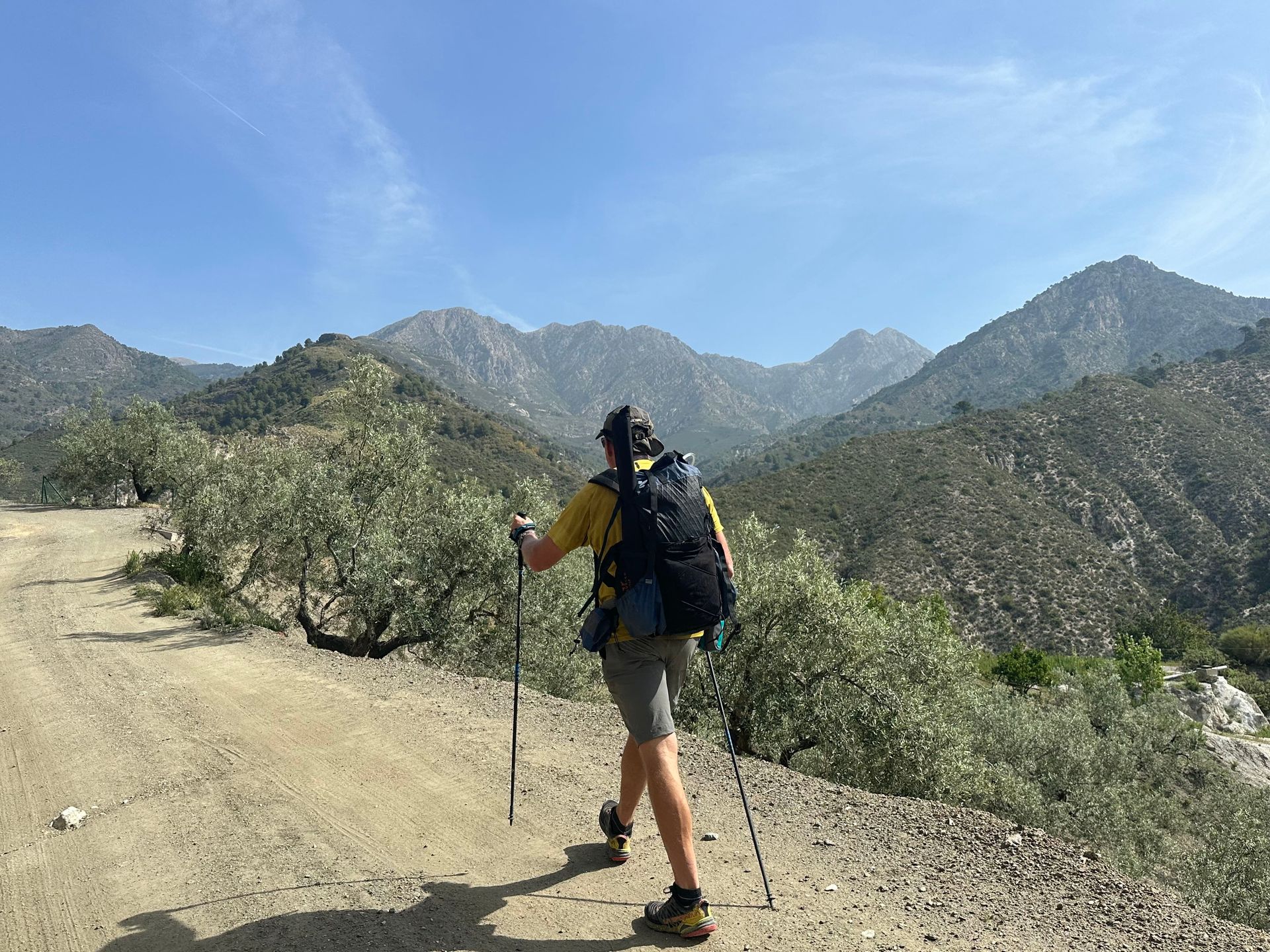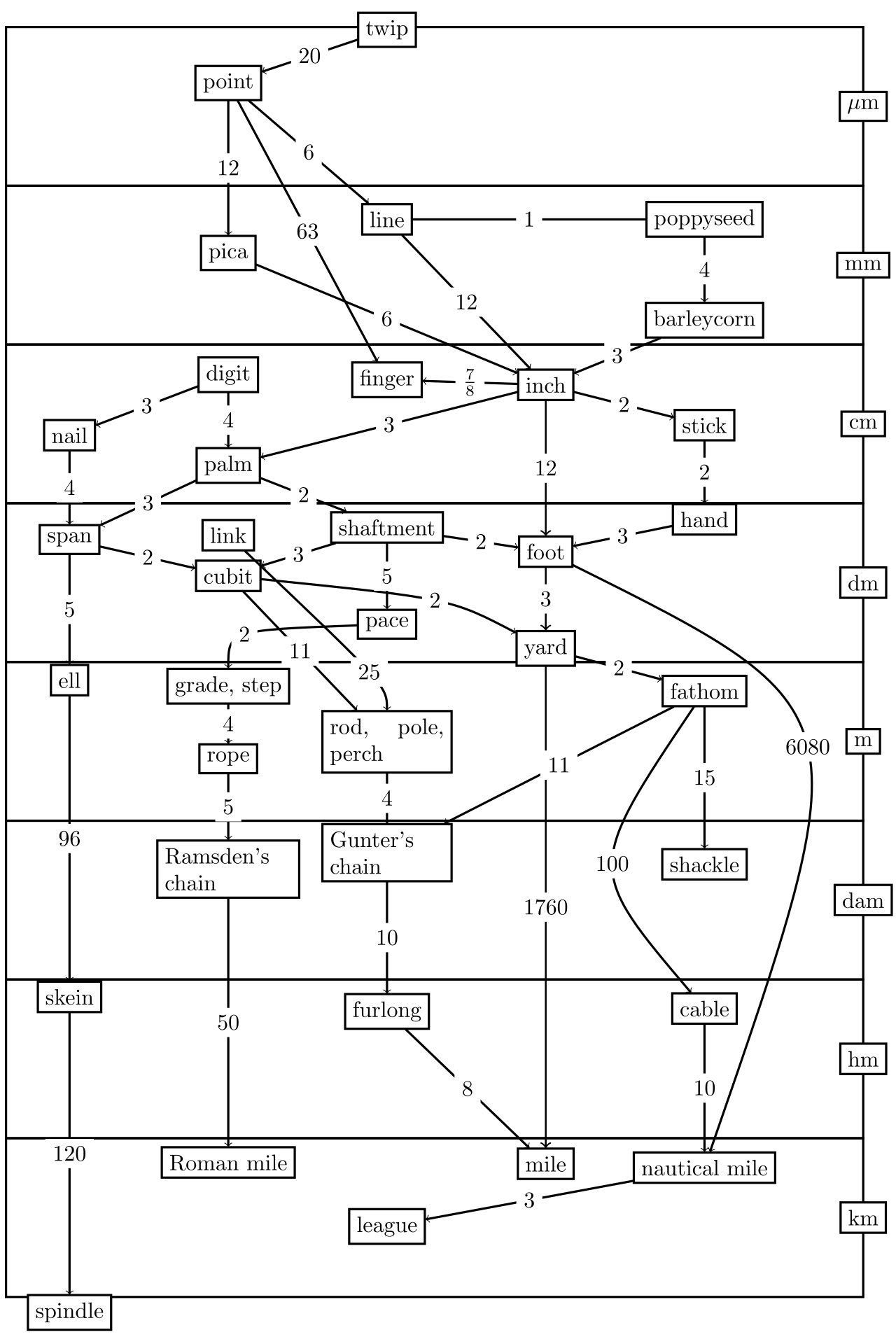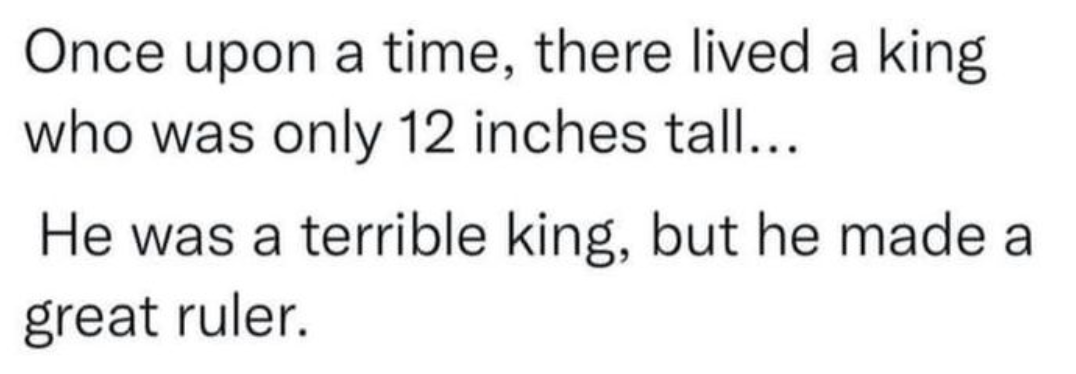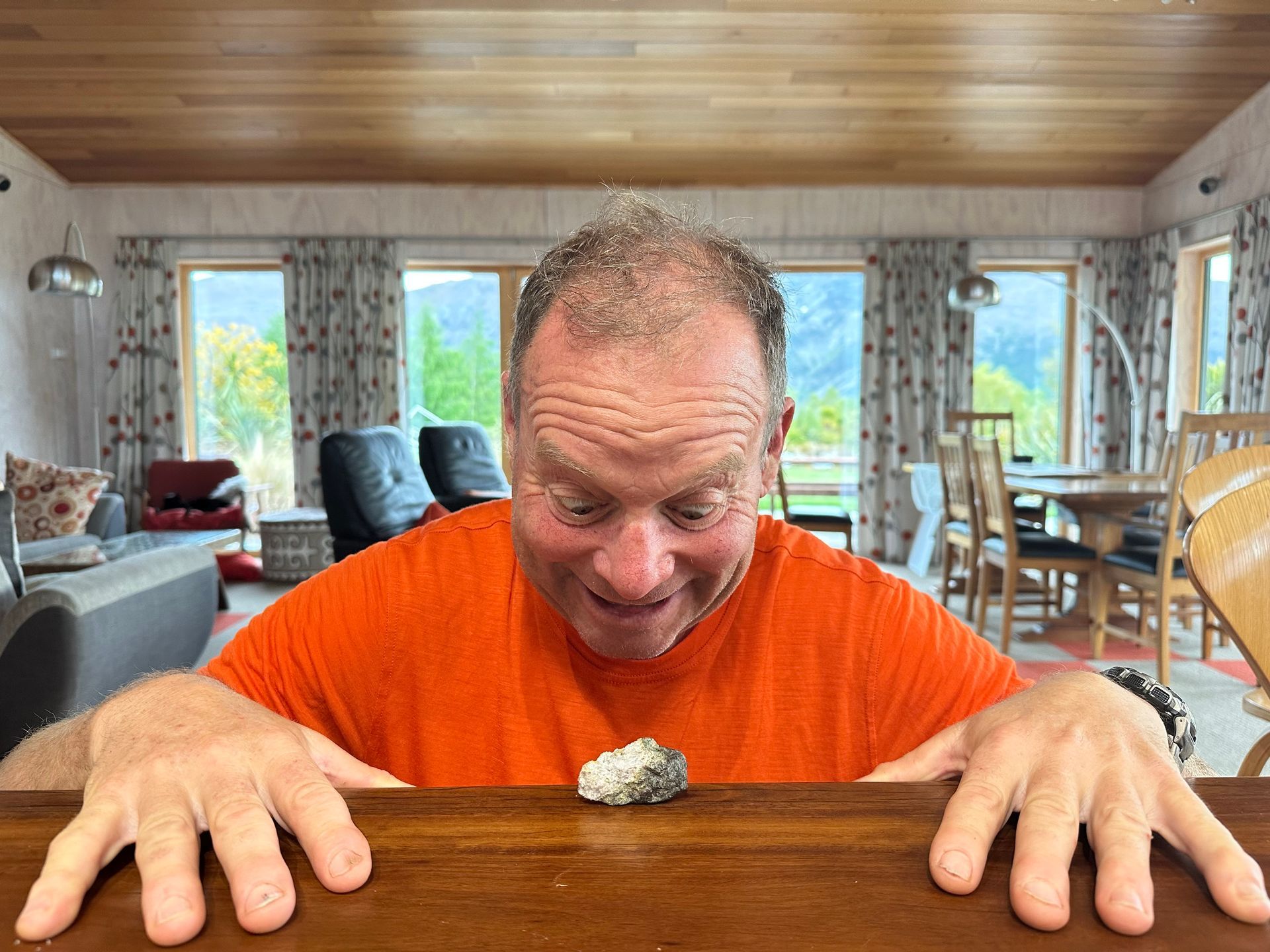How Far Do We Have to Go?

Our scenery has changed – we are hiking again, this time in Andalucia, southern Spain. Distance is of every day interest – how far do we have to go and how high do we have to climb (time is also of interest – how long will it all take?)? I am very glad I live in a place and time where we use easy-to-manipulate decimal-based measurements, rather than 12 inches in a foot and 5280 feet in a mile. I can never remember how many feet in a mile, nor do I particularly want to.
However, what prompted this blog was not actually calculating how far we have to walk in a given day. I was looking at a 1920s property title document and wondered what the units were on the sides of the property. I knew the approximate distance of the property in metres – the number wasn’t metres and it wasn’t feet either. I investigated what it could be – the measurement was in links.
I had completely forgotten about links, chains and furlongs, which I had read about many years ago in children’s books. Walt Whitman wrote, “And whoever walks a furlong without sympathy walks to his own funeral drest in his shroud.” I’m sure I didn’t read that as a child but it’s a good example of the word being used.
Interestingly, United Kingdom furlongs, chains and links turn out to have something of the decimal in them:
- the UK statute chain is 22 yards long (66 feet, or four perches or rods...that's a whole other set of measurement units);
- a furlong is 220 yards or 10 chains;
- a link is one hundredth of a chain (7.92 inches);
- there are 10 square chains in an acre.
Less metrically, there are 1,140,480 twips (twentieth of a point) in a Gunter’s chain and you can calculate a twip by taking your US shoe size, adding 26 & dividing by 1/160.3 x the length of your foot in inches.
In 1620 Edmund Gunter developed the chain method of measurement for accurately surveying land in the UK using a literal hundred link chain which was 22 yards long. Here's a picture of Gunter's Chain, which is in the Campus Martius Museum in Ohio. Having a chain you carried around would be a practical method of measuring land but heavy; you would need a horse and dray.
In 1784 Gunter’s chain was adopted for land measurement in the USA by Thomas Jefferson.
Gunter’s chain was also used in Australia and New Zealand to lay out plots of land in the 1800s and early 1900s – sections were typically a quarter acre, 1 chain wide by 2.5 chains long and roads were typically 1 chain wide, while laneways were a half chain.
However, Gunter’s is not the only chain:
- In the late 1700s in the UK, Jesse Ramsden devised a longer chain of 100 feet (30.5 m), with a hundred single foot (305 mm) links. It was called the engineer’s chain. It never supplanted Gunter's chain.
- Until the early nineteenth century, the Scottish and Irish customary miles were longer than the UK statute mile; consequently a Scots chain was about 74 (imperial) feet and an Irish chain 84 feet. These longer chains became obsolete following the adoption of the imperial system of units in 1824.
- The Texan chain or ‘varas chain’ is 20 varas (meaning rods) long (55.5 feet, 16.9164m). How can the Texas chain be shorter than the UK chain, that's not how Texas works! The Texan chain was used to survey land grants in Texas, New Mexico and California.
- Metric chains, 5, 10, 20 and 30m long, are commonly used in India.
While chains are mostly not in common use, their use has not completely disappeared:
- Points on UK railway systems are still measured in chains from the station of origin and distances on rail lines are referred to as ‘chainage’ (although new railways express the value in metres).
- Cricket pitch stumps are one chain apart.
- Chains were used to measure the spread of wildfires (chains per hour) and the term is still used by US wildland firefighters.
- The concept of ‘The Queen’s Chain’ remains in New Zealand – a strip of public land, usually one chain wide from the high water mark, set aside for public use along the coast, around many lakes, and along many rivers when public land was sold. These strips were legislated in 1892 (not by the Queen). The distance was reduced in 1948 to 3 metres.
And here ends today’s lesson about links, chains and furlongs.
PS We still have 18,805.2 chains (18,805,178 links or 188 furlongs) of 416 kilometres to go.
The UK measurement system provides all sorts of exciting ways to measure things








